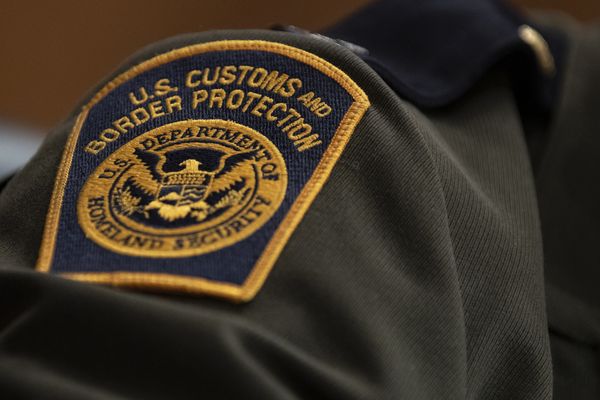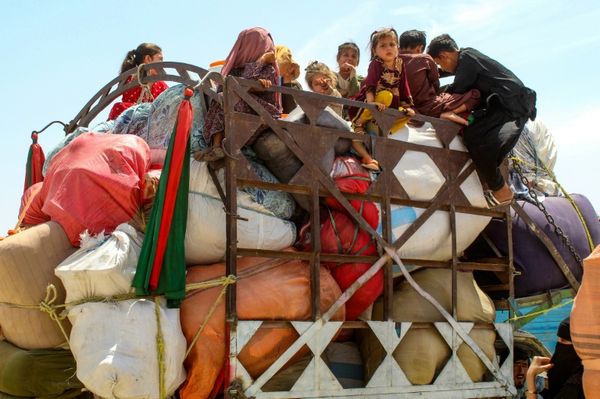
Australia has rejected Chinese allegations an Australian airforce plane “deliberately intruded into China’s airspace” and undermined its national security, saying the actions of a Chinese navy fighter pilot who released flares near the Australian aircraft were “wrong … and very very dangerous”.
Australia’s defence department accused the Chinese navy of an “unsafe and unprofessional” incident by allegedly dropping flares dangerously close to an Australian patrol flight on what it described as routine operations in the South China Sea on Tuesday.
Both countries lodged formal complaints with each other over the incident.
The Australian prime minister, Anthony Albanese, told a press conference on Friday: “We have made representations through our normal diplomatic channels. We regard this action as unsafe. We have made that clear. We have made it public as well as in private.”
Australia’s defence department on Thursday also released information about three Chinese ships it had been monitoring in the Coral Sea, to Australia’s north, for several days.
The flare incident is the latest contested run-in between military craft from the two countries, following a similar aircraft encounter in the same area last year and a highly controversial report of a Chinese ship deploying sonar in close proximity to Australian navy divers in 2023.
The latest incident, on 11 February, involved an Australian P-8A Poseidon patrol aircraft conducting a “routine maritime surveillance patrol in the South China Sea” when it encountered a PLA-AF J-16 fighter aircraft, a statement from the defence department on Thursday afternoon said.
“The PLA-AF aircraft released flares in close proximity to the RAAF P-8A aircraft. This was an unsafe and unprofessional manoeuvre that posed a risk to the aircraft and personnel,” the department said.
The statement went on to say there were no injuries and no damage was sustained to the aircraft. The defence minister, Richard Marles, said if any flares had hit the Australian plane, it would have “had the potential for significant damage”.
He told Sky News “a number of interactions” occurred between the two craft.
“What’s important though is that the proximity of the J-16 was so close that there’s no way you could have been able to ensure that the flares did not hit the P-8,” he said.
“We have made representations about our concerns to the Chinese government both yesterday and today here in Canberra, but also in Beijing.”
But China defended its pilot’s actions. Guo Jiakun, a foreign ministry spokesperson, told a press conference overnight its military was provoked.
“The Australian military aircraft deliberately intruded into China’s airspace over Xisha Qundao [the Xisha islands] without China’s permission. Such a move violated China’s sovereignty and undermined China’s national security. The Chinese side took legitimate, lawful, professional and restrained measures to expel the airplane.
“China has lodged serious protests with Australia and urged it to stop infringing on China’s sovereignty and making provocations and stop disrupting peace and stability in the South China Sea.”
Australia’s minister for education, Jason Clare, however, said on Friday that this account was “wrong”.
“I know this is contested, but this is international air space. The actions of that Chinese pilot were wrong. When you fire off flares within 30 metres of another aircraft, it’s very, very dangerous, people could have got hurt, and that’s why we’ve made an official complaint to the Chinese government about this.”
The crux of the issue is the status of the South China Sea.
China claims a vast swathe – more than 3.5m sq km – of the sea.
But the areas asserted by Beijing to belong to China are also variously claimed by Vietnam, Taiwan, Malaysia, Brunei and the Philippines.
Australia, and allies such as the US and regional partners, routinely conduct freedom of navigation exercises through international waters in the South China Sea in accordance with international law.
Australia’s defence department said in its Thursday statement: “Australia expects all countries, including China, to operate their militaries in a safe and professional manner.
“For decades, the [Australian Defence Force] has undertaken maritime surveillance activities in the region and does so in accordance with international law, exercising the right to freedom of navigation and overflight in international waters and airspace.”
At the same time as it issued a statement on the flare incident, the defence department also released information about what it called a “People’s Liberation Army-Navy task group” in waters north-east of Australia: a Jiangkai-class frigate named Hengyang, a Renhai cruiser named Zunyi and a Fuchi-class replenishment vessel Weishanhu.
It was understood Australia’s defence department believed the Chinese ships were operating in accordance with international law, conducting freedom of navigation exercises.
Defence said the ships had travelled through south-east Asia, then entered Australia’s maritime approaches.
“One of the vessels, the Hengyang, transited the waters to Australia’s north,” a separate statement said.
“Australia respects the rights of all states to exercise freedom of navigation and overflight in accordance with international law, just as we expect others to respect Australia’s right to do the same.
“Defence will continue to monitor the activities of the task group in Australia’s maritime approaches with a combination of capabilities, including air and maritime assets.”







